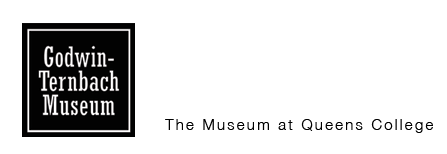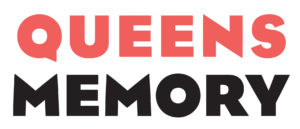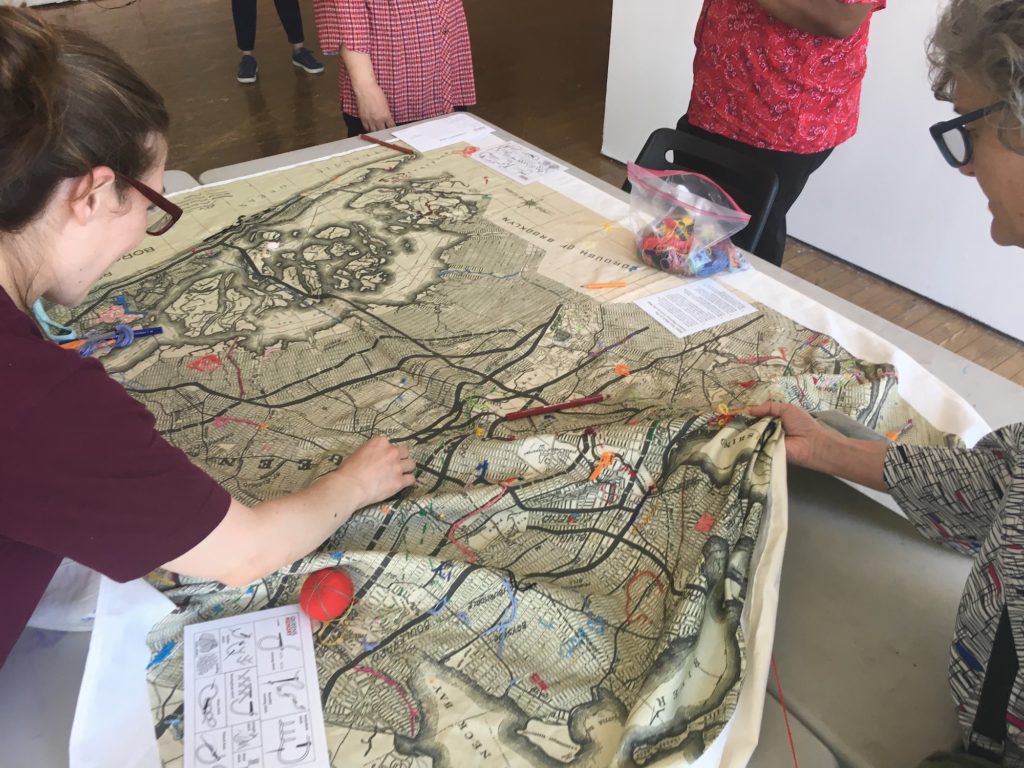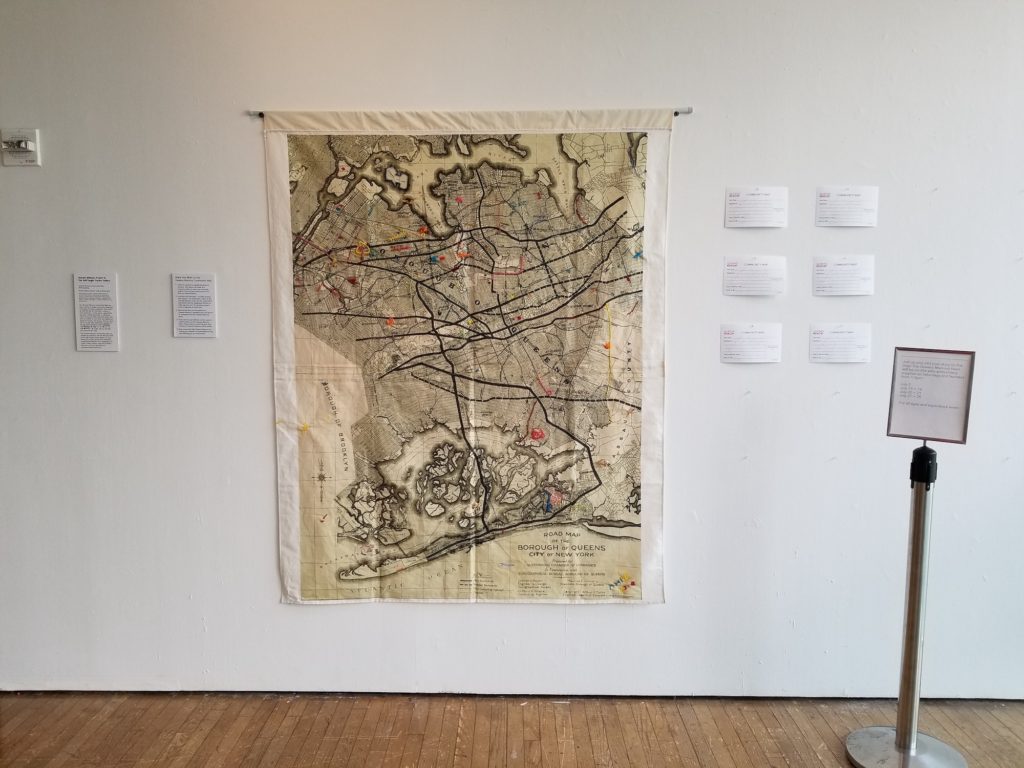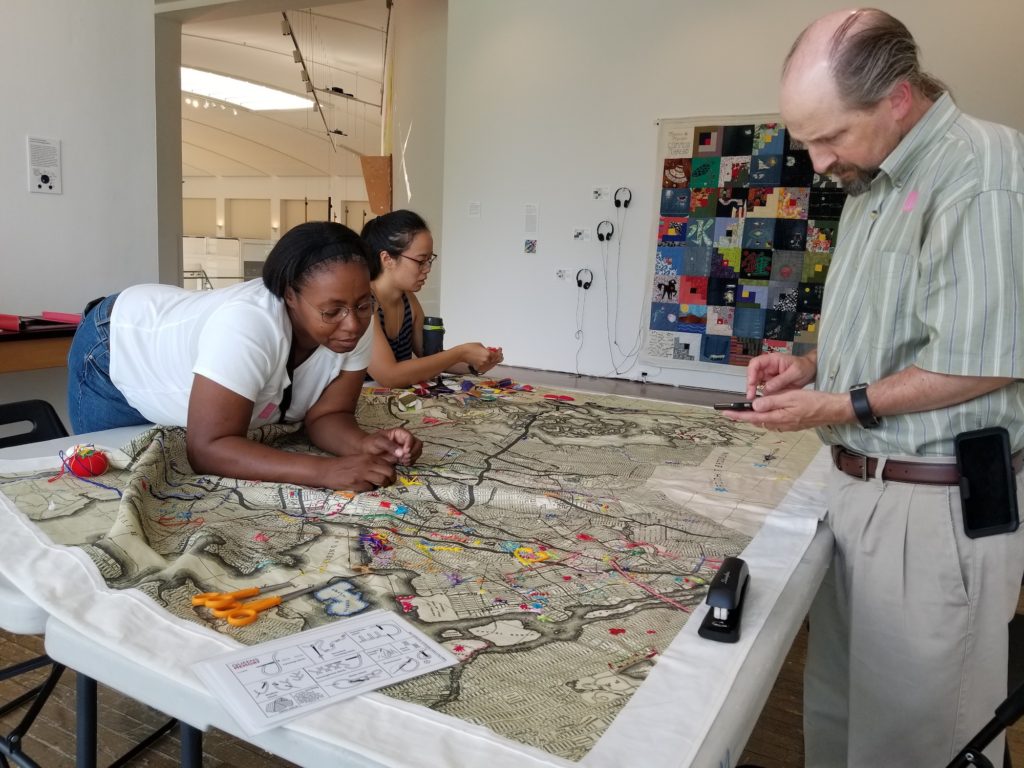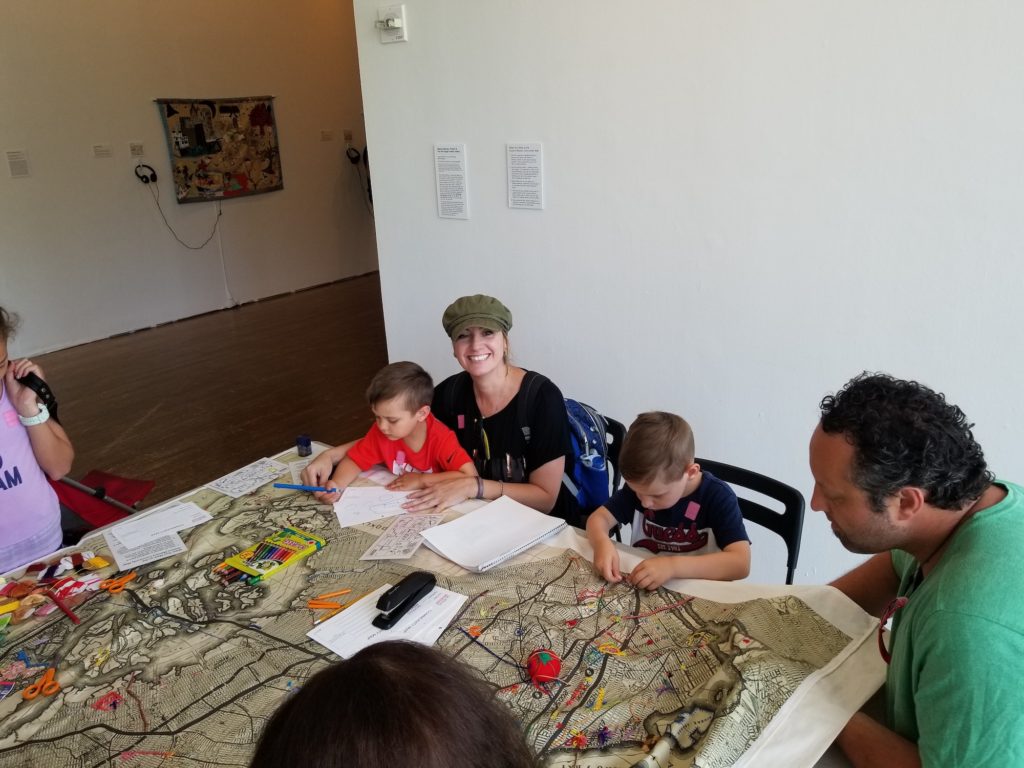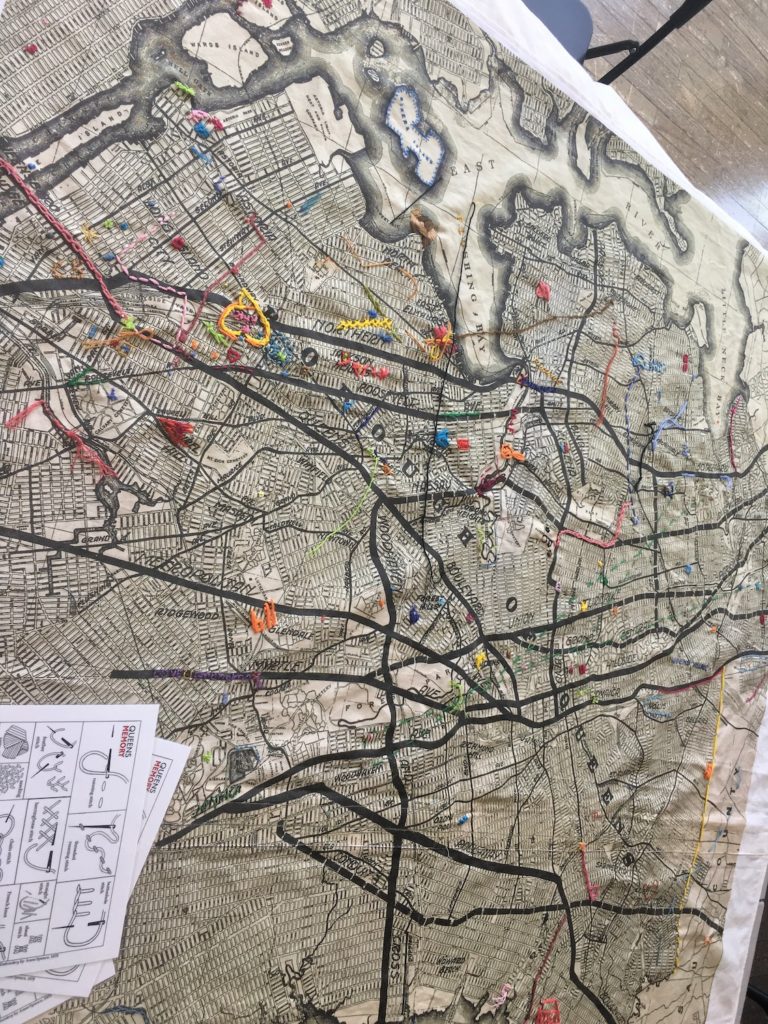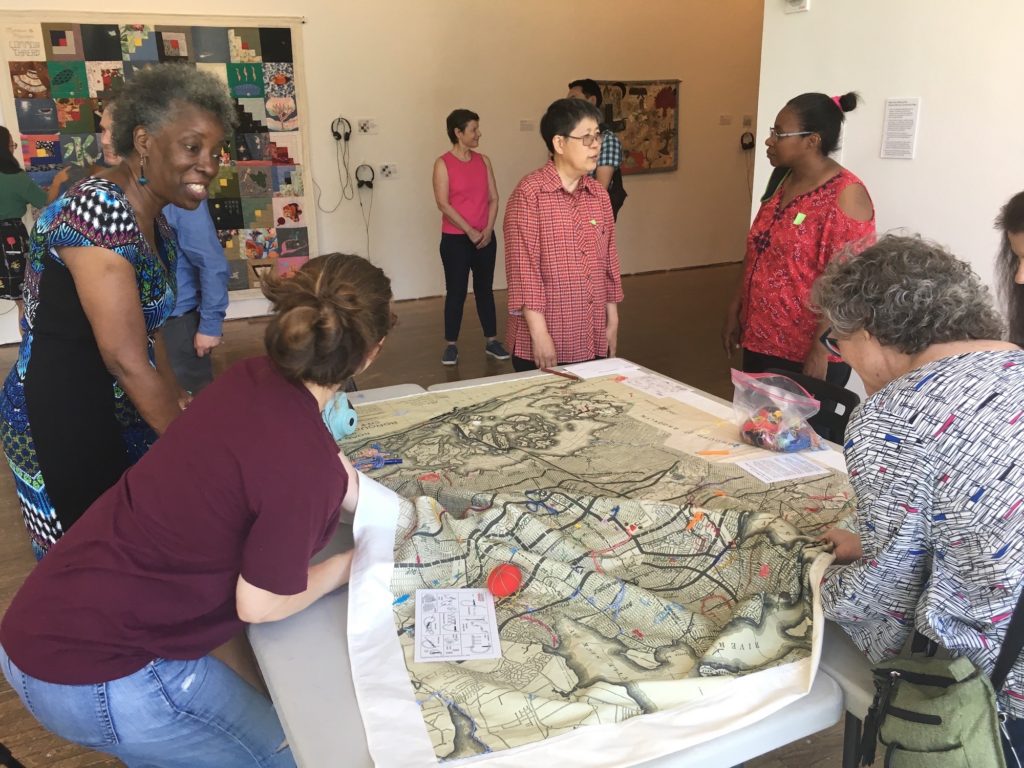The Queens Memory Community Map contains markers of places and events important in the lives of Queens residents. Their stitches mark the site of a first kiss, a school, a work commute, a crime scene, a great birding area, a family burial plot, a childhood home, and many other important spots. We invite you to mark your own significant place in Queens. As the exhibition is only open to the Queens College campus community, on selected days, the Queens Memory team will be on-site with embroidery supplies for all ages and experience. More information to follow. Join us and add your story to the map!
The Queens Memory Community Map was created by American Folk Art Museum staff at the Self-Taught Genius Gallery in Long Island City as part of their exhibition, Handstitched Worlds: The Cartography of Quilts, on view July 16 – Oct 3, 2018. Gallery visitors made the contributions you see here, described on ourqueensmap-blog.
The map printed on this canvas is reproduced from an historic map from the Archives at Queens Library. Prepared by the Queensboro Chamber of Commerce in Cooperation with the Topographical Bureau, Borough of Queens. Copyright 1924, Arthur S. Tuttle, Chief Engineer, Board of Estimates & Apportionment
Photographs by Catherine Grau, Queens Museum, and Natalie Milbrodt, Queens Library
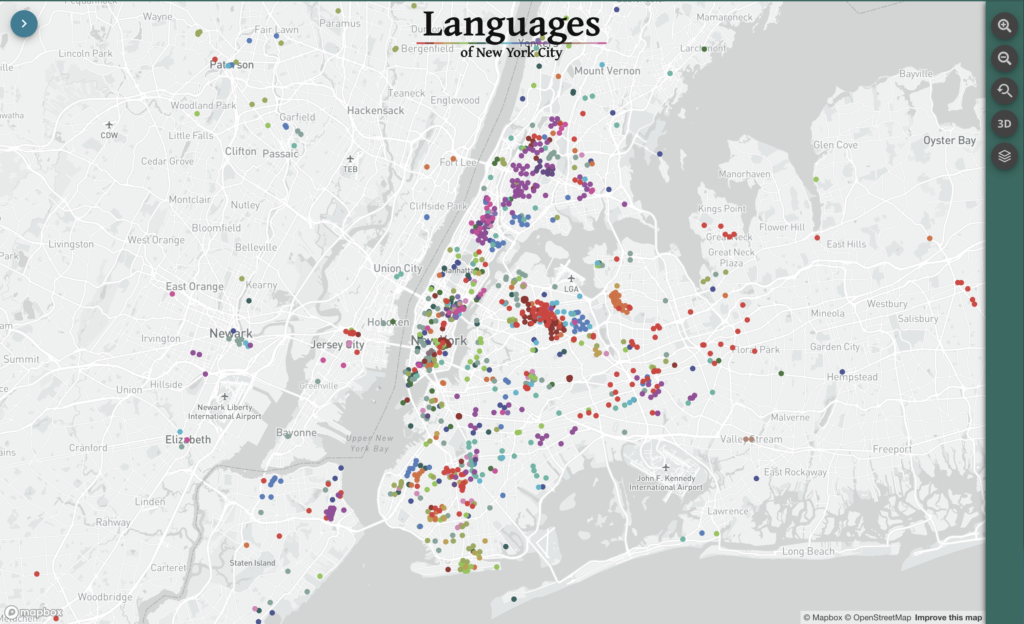
Welcome to Languages of New York City, a free and interactive digital map of the world’s most linguistically diverse metropolitan area.
All data, unless otherwise specified, is from the Endangered Language Alliance (ELA), based on information from communities, speakers, and other sources.
The map is a work in progress and a partial snapshot, focused on significant sites for Indigenous, minority, and endangered languages. Larger languages are represented selectively.
To protect the privacy of speakers, some locations are slightly altered. Social media users, note that LANGUAGEMAP.NYC works best in a separate browser.
This map was created by the Mapping Linguistic Diversity team, with core support from the Peter Wall Institute for Advanced Studies and the Endangered Language Alliance.
